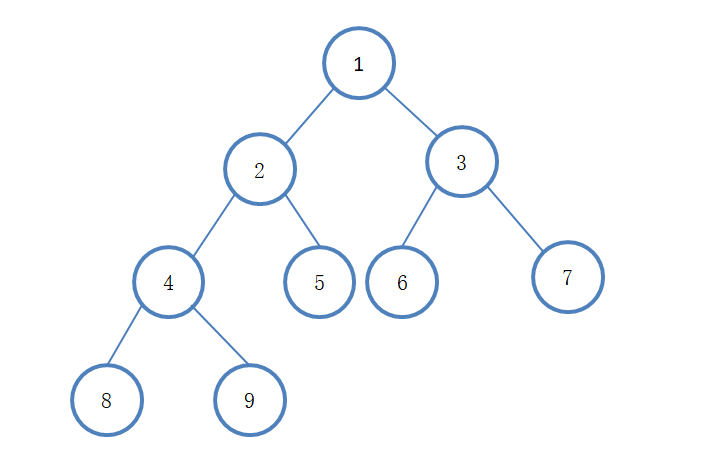最近在Leetcode刷题,发现遇到不少二叉树类型的题目,题目会定义好树节点TreeNode的数据结构。
1 public class TreeNode { 2 int val; 3 TreeNode left; 4 TreeNode right; 5 TreeNode() {} 6 TreeNode(int val) { this.val = val; } 7 TreeNode(int val, TreeNode left, TreeNode right) { 8 this.val = val; 9 this.left = left; 10 this.right = right; 11 } 12 }
在题目的示例中,二叉树的输入都是一个一维数组,表示这个二叉树结构。
例如:
输入:root = [3,1,4,3,null,1,5]
表示的二叉树为:

因此在IDE里面编码调试时,需要一个转化方法方便自己编写并运行测试用例。
简单分析数组和二叉树之间的关系:
输入:root = [1,2,3,4,5,6,7,8,9]

第i个节点的左子节点为第2*i个节点,右子节点为第2*i+1个节点。因此用简单的递归就可以实现。
1 public class TreeNodeUtil { 2 public static TreeNode createTreeNode(Integer[] array){ 3 TreeNode root = createTreeNode(array, 1); 4 return root; 5 } 6 7 private static TreeNode createTreeNode(Integer[] array, int index) { 8 if(index > array.length){ 9 return null; 10 } 11 Integer value = array[index - 1]; 12 if(value == null){ 13 return null; 14 } 15 TreeNode node = new TreeNode(value); 16 node.left = createTreeNode(array, index * 2); 17 node.right = createTreeNode(array, index * 2 + 1); 18 return node; 19 } 20 }
但是这个方法对于一些情况却转化错误。因为这个一维数组是优化后的。
例如:

按照上面方法,输入应该为:
输入:root = [2,null,4,null,null,9,8,null,null,null,null,null,null,4]
空子节点下没有子节点,因此不需要这么多冗余数据。
因此输入应该为:
输入:root = [2,null,4,9,8,null,null,4]
再次分析数组和二叉树之间的关系,发现数组中的数据顺序是按照二叉树的层级排列的,这时可以使用队列的数据结构,数组中的节点按顺序进队,每次节点出队,如果不是空节点,那么紧跟着是该节点的左子节点和右子节点。
1 public class TreeNodeUtil { 2 public static TreeNode arrayToTreeNode(Integer[] array){ 3 if(array.length == 0){ 4 return null; 5 } 6 TreeNode root = new TreeNode(array[0]); 7 Queue<TreeNode> queue = new LinkedList<>(); 8 queue.add(root); 9 boolean isLeft = true; 10 for(int i = 1; i < array.length; i++){ 11 TreeNode node = queue.peek(); 12 if(isLeft){ 13 if(array[i] != null){ 14 node.left = new TreeNode(array[i]); 15 queue.offer(node.left); 16 } 17 isLeft = false; 18 }else { 19 if(array[i] != null){ 20 node.right = new TreeNode(array[i]); 21 queue.offer(node.right); 22 } 23 queue.poll(); 24 isLeft = true; 25 } 26 } 27 return root; 28 } 29 }
这样,一维数组转换成二叉树就完成了!输入一个一维数组,返回二叉树的根节点。